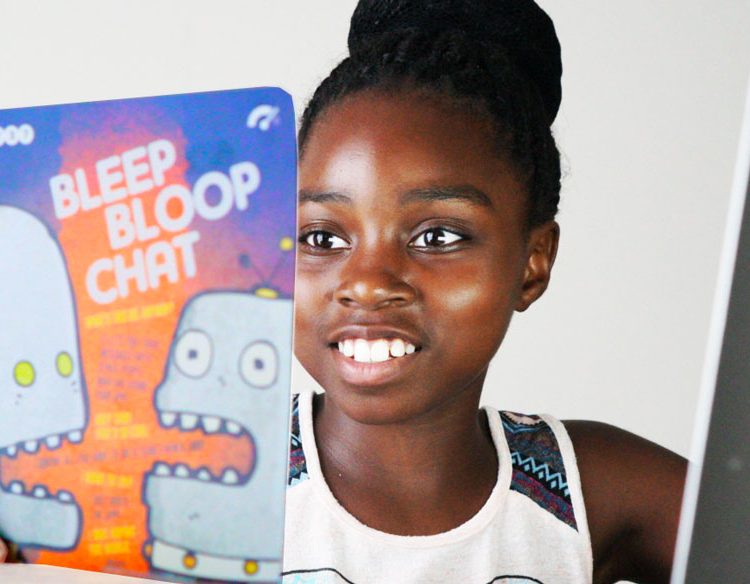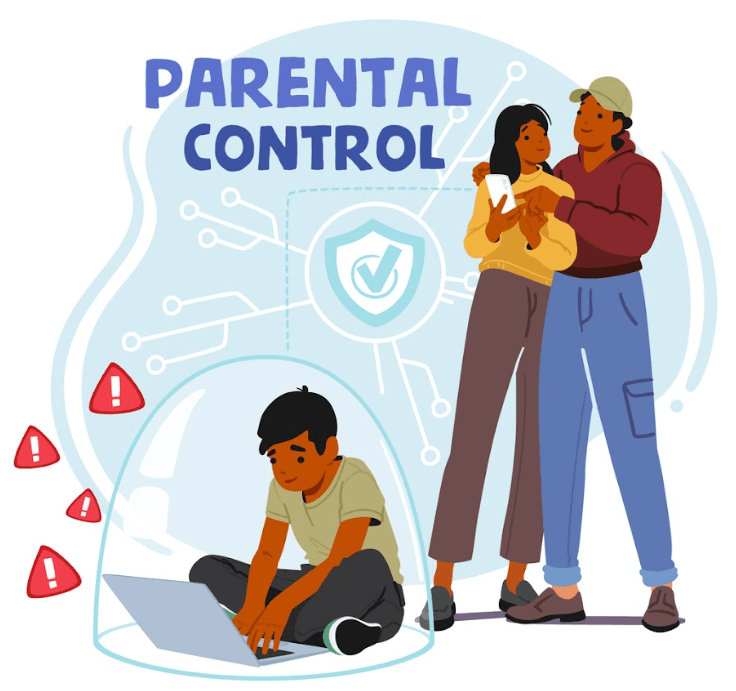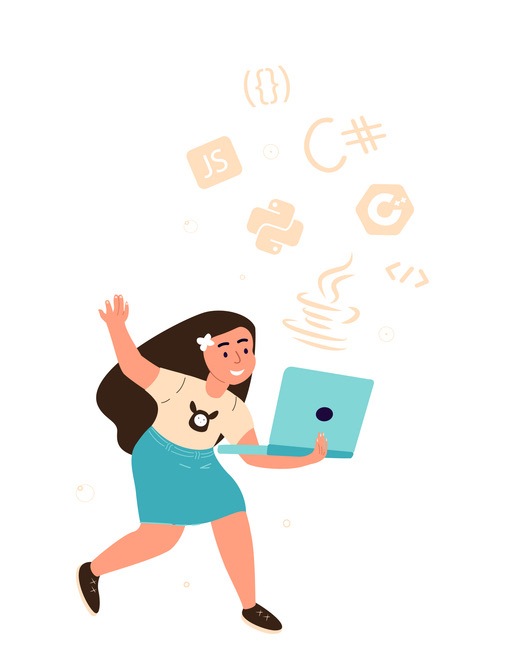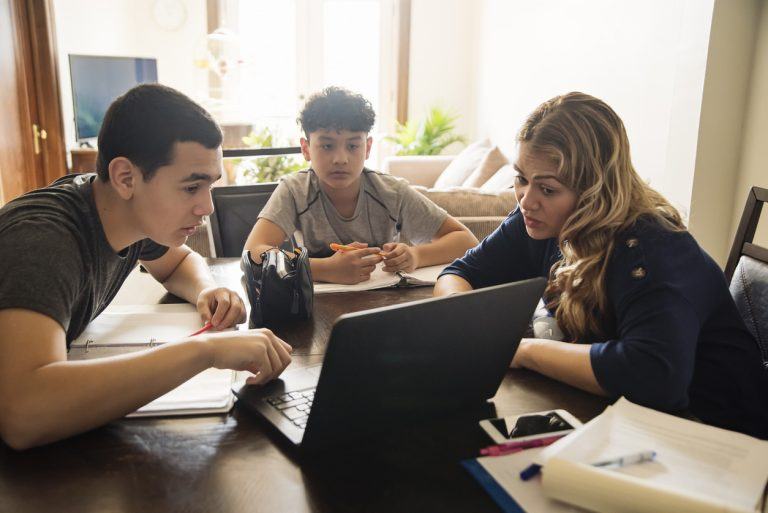If you’ve been looking for resources to help your child or student learn how to code, you’ve probably stumbled across a variety of options. There’s also a fair chance that you’ve heard about BitsBox at some point in your journey!
Here at CodaKid, we love additional resources like this. It can really help to round out a child’s computer science education when they have an array of options and opportunities in front of them. Plus, it can help to establish computer science as a subject just as central to a student’s education as things like math and history.
That said, all programs and websites are different. You’re probably wondering what makes BitsBox a good choice amongst the range of other options available for students of all ages and backgrounds. What is the structure? What areas of computer science are covered? What is the intended audience? How does BotsBox compare to other resources that teach coding for kids?
To help, we’ve compiled all of the basics in one ultimate BitsBox Review for your benefit!. We hope that this gives you a solid foundation about this resource so that you won’t have to keep searching for information in various places – after all, that time can be better spent helping your child or student with their supplemental education!

Table of Contents
BitsBox Review: Intended Audience
Before we really dive into this BitsBox review, it’s critical to establish the intended audience. After all, no matter how great a program is, none of it matters if it isn’t applicable to your and your student’s demographic!
The simplest answer to the age range for BitsBox is that it is designed for kids 6-12 years in age. The specific age of the child will, of course, impact how they engage with BitsBox and what exactly they get out of it. If they are 6 or 7, for example, they may elect shorter projects with simpler customizations than a 12-year-old would.
Regardless of age, it is always best if a parent or teacher can be around to help. This is especially important at the beginning and for younger students. Older or more experienced students likely move through projects much more quickly and need much less guidance.
Now, there are also exceptions to this general age range. All students are different, and BitsBox does have a number of younger kids (as young as 4) who have found success (provided they have the proper one-on-one guidance and help from parents or teachers). Additionally, plenty of teenagers and grownups who are new to coding have also learned basic skills from BitsBox and enjoyed it!
The bottom line is that if the student is able to read, they can code with BitsBox! This is, of course, a different milestone for different students, so reading level can be used as the general guide for whether a child is ready for BitsBox.
In terms of location, there is some fun news here! It isn’t limited to only the U.S. or any other singular country… in fact, BitsBox has customers in over 70 countries!
That said, countries outside of the U.S. do face additional shipping charges at checkout (ranging from $5/month to $18/month based on subscription level), so it may be possible that the digital delivery option (which we will dive into soon) is the best for you if you are an outside country. After all, plenty of online educational resources are perfectly useful for students!

Courses and Subscriptions
Now we can dive into the fun part… the actual courses and subscriptions at BitsBox! There are actually a number of different types of subscriptions you can use, so we will describe the most important details of each as well.
The basics are that BitsBox teaches kids how to code through fun app-building projects that they can either receive digitally or in the mail each month. The students will use these projects on the BitsBox website and the apps can work on any device with a web browser.
First, kids will create a coding account. This will bring them to a virtual tablet in their coding environment where the students will type in the code from the physical projects into the text editor next to their tablet. Upon finishing the code typing, the new app will run on their website.
These apps run on most mobile devices and can be shared via text, e-mail, QR code, or web link. They also update in real time so that students can continue to tweak and update them. Best of all, students are even able to play multiplayer games across screens, so it can be interactive and interpersonal experience as well!
About a dozen new coding projects are provided each month, and they vary in type and subject matter. Kids can even customize the code to make the app unique, making it a creative experience as well!
This is very similar to the traditional method of copying code from books and magazines with an exciting modern twist that kids will love. They can learn to code by typing the code provided and eventually writing their own, much like people are able to learn an instrument and then eventually be able to compose their own music!
All that said, there are three main types of subscriptions that you can look into: Digital BitsBox, Basic BitsBox, and Deluxe BitsBox. Once you decide on the subscription type that is best for you, you can decide which package to choose (tip: longer subscription packages will provide a discount!).
Digital BitsBox Review
This is the simplest and cheapest subscription level… and probably the most eco-friendly! The Digital BitsBox provides a PDF sent directly to your e-mail that contains the projects you will use. Every month has its own theme (animals, robots, etc.) which brand new apps and things that kids can learn.
These boxes contain the same projects as the box subscriptions, just without the physical form. You can also easily print them out if you want the physical copy! Otherwise, you can simply work on your screen to save paper and avoid waste.
Each box contains:
- Coding Supercards: These supply the app projects with inspiration and guidance for the students. They can be printed out or left on the screen!
- Grown-up Guides: This is very useful for the adult that is guiding the students. It contains important information about the month’s new coding commands and concepts so that it will be easier to keep track of what the students are learning and how to help them.
- Simple Website: Of course, everything is online and ready to go on the comprehensive BitsBox website.
Basic BitsBox Review
If you’re ready to go a step up and receive physical boxes instead, you can go for the Basic BitsBox. Every month, you will receive a set of app creation projects right at your doorstep. These will also be themed and will have the same general content as the digital box listed above!
This is a great tool for kids who are more hands-on and like to express their creativity with physical projects. Plus, it can be neat to organize things in this way!
The box comes with everything listed above in the Digital Box in a physical form as well as:
- BitsBox Binder: This is the perfect organizational tool for the month’s projects. It is a custom-designed “Apper Keeper” that helps students keep all of their materials together in one place. It can hold six months worth of projects!
- Stickers and Chart: This is a fun and colorful way for kids to keep track of their progress. As they complete the projects in the box, they can use these fun stickers and the sticker chart to track their progress and feel rewarded for their accomplishments.
Deluxe BitsBox Review
Finally, if you’re ready for the ultimate BitsBox experience, you should look into the Deluxe BitsBox. This comes with everything in the basic box as well some fun add-ons to make the experience that much more exciting for the students!
One of the hardest parts about any subject, whether it be coding or more traditional areas like math and science, is making sure you keep them interested. This is especially true once the mystery has worn off and you’ve been at the subject for a few months now. This is why the extra fun in the deluxe box is so worthwhile – it can help to keep young coders engaged (especially when they are particularly motivated by presents and prizes).
The box includes everything supplied by the basic box as well as:
- Trading Cards: This is a random set of 5 simple apps to build. These are also great when multiple students are involved because they can trade with each other and keep each other excited about the subject.
- Temporary Tattoos: What kids don’t like temporary tattoos? This is a fun and creative way to show the world that they are smart, capable coders. All tattoos are non-toxic and made with vegetable-based inks!
- A Mystery Toy: This is another great way to keep kids motivated, especially when the toy can serve as a reward for completion of the projects. Each toy relates to the monthly BitsBox theme, too, so kids can stay excited from start to finish!
Coding Languages Covered
One of the exciting parts of coding is the various coding languages that can come into play. That said, it’s also important to note right at the start which languages particular programs will teach so that you make sure you are covering the area you intend to.
BitsBox focuses on Javascript/HTML5. It is important to note, however, that it is not naked Javascript that could be confusing and overwhelming to any coding beginner, let alone young children. BitsBox provides a short and simple library of programming commands for reference, and everything is carefully designed so that it will be easy to type and learn.
So… why is a coding language like Javascript important? Why is it so important, in fact, that programs like BitsBox feel a need to focus on it specifically?
Basically put, Javascript is arguably the most popular computer language, so BitsBox isn’t alone here. This is so critical to note because it essentially makes Javascript the official language of the web, making up major platforms like Google, Pandora, Twitter, and Facebook.
Plus, it is closely tied and very similar to C, C++, Objective C, and Java. These are all big and important languages commonly used in the computer science community as well, making the things that students learn with BitsBox critical to their eventual professional development in the coding community.
BitsBox Review: Technical Requirements

Now that we’ve got you excited about all the details of BitsBox, we need to make sure you have the right equipment to use it and make the most of it.
Firstly, you will need a computer with a web browser. This could be a Mac, PC, Linux, or Chromebook, and it is important to note that Google Chrome is the best browser to use when possible. It is technically possible for kids to use BitsBox on tablets like iPads, but it is recommended that they use a machine with a physical keyboard when possible. This will make it easier to type, especially as beginners still learning.
BitsBox works within a webpage, so there aren’t any complex tools that you will need to download and install or acquire. You also won’t have any files to worry about managing as everything is in the cloud!
You don’t even need a particularly powerful machine to use BitsBox. Any computer made in the last few years is fine, and it is likely that this is the type of machine you’d want to acquire anyway for a myriad of other reasons (technology does age, after all).
After that, you’re set! You will need an e-mail as well, but if you or your students don’t already have one, it’s easy to set up an account, even if just for this purpose!
BitsBox Review: Pricing
BitsBox freemium option gives a base-level experience that is available for all students regardless of financial capacity. Plus, it makes it easy to explore a little bit and see if it seems like the right direction for you or if you would rather keep looking around.
That said, if you want to get coding projects, tips, and inspiration on a monthly basis, you will have to pay for subscriptions. These subscriptions start at $16.95 and go up from there, depending on the package you choose.
This minimal price is for the Digital BitsBox. This is the simplest form and includes a PDF download of the projects each month (the features of which have already been established).
The physical boxes we discussed – the Basic BitsBox and the Deluxe BitsBox – are $24.95 a month and $37.95 a month respectively. These will provide the monthly shipments of a dozen projects and their nifty organizational binders.
It is up to you whether you think the extra cost is worth it for the physical boxes. Every student and situation is unique, so if the PDF works perfectly for you, then there is no need to splurge! But if you are ready to tackle a fun shipment of coding projects at your doorstep every month, then you should definitely look into the box packages.
Now, in terms of billing, things can get a little more complicated. Prior to February 20th, 2018, users were renewed and billed on the first of the month. Now, however, new subscribers are billed on the anniversary of the order. This means that if you bought a monthly subscription on November 12th, you would be renewed and billed on December 12th. If you bought a 3-month subscription on November 12th, you would be renewed and billed on February 12th (and so on).
If you order through Amazon, you are billed every time a box is shipped within 2 days of the original order (or anniversary of the order). Since there are a lot of different qualifiers here and it is possible that you are confused about which category pertains to you, you can always contact them for specifics!
In Summary
That about covers pretty much every main area that you could need in a BitsBox review, so hopefully your general idea and view feel much more secure and informed.
To recap, we have discussed:
- Intended audiences
- Courses
- Languages covered
- Technical requirements
- Pricing
We know that the top priority for you is the ability to make informed decisions when it comes to your child’s education. Hopefully this guide has helped to provide some more insight on this particular platform so you can know if you are headed in the right direction.
So, what are your thoughts on BitsBox? How might you incorporate it into your child’s education?

















